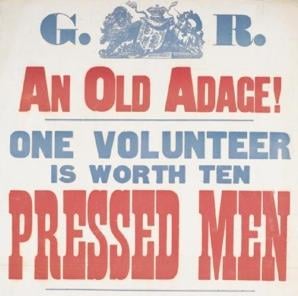
4 min read
Stories of great marketing campaigns are everywhere. From viral social media campaigns, huge billboards and even use of futuristic tech, people are coming up with new ways to grab your attention every day. As Communications Manager at RG I'm always coming into the office inspired about the latest exciting campaigns. But the question in my mind is always the same:
How do we create this “WOW” effect with our employee comms?

Employee communications can be tricky to get right, even more so when you have a tight budget. This often leads to relatively dry, even uninspiring, communications. Think about that A4 poster in black and white you tacked up on the office noticeboard. Far less impactful than the mainstream media surrounding us!
When this is related to the promotion of employee benefits, the result is low engagement and unsatisfied employees, which I think everyone can agree is the big thing we are all trying to avoid.
But it doesn’t have to be this way! I am a firm believer in the idea that you always find a way to engage your staff, no matter what your budget or your situation.
Here’s a few key tips on how to overcome the barriers to low employee engagement with a low budget employee communications plan:
Lay the groundwork:
In every workforce there will be different pain points and different reasons why employees might not engage with your benefits platform. The key is to acknowledge these reasons so you can use targeted messaging to break down those walls!

For example, at FirstGroup a pre-launch staff poll revealed that staff responded more positively from communications coming directly from the new CEO. They decided to proactively use the CEO’s signature on launch comms and send each employee a letter from the CEO in the post. The astounding effect was that more than 2,000 people signed up to their new benefits portal in the first few days after launch.
Doing your research before you launch any new communication will not only have a big impact on how your message is received but also reduces the likelihood of spending precious budget on a failed idea.
Related: 3 Tips For Building Your Global Communications Strategy
Build up suspense.
You can ensure a new initiative gets a lot of interest by turning up the heat in advance. The key to a successful teaser campaign is to keep it short and sweet. Build up slowly up to the big reveal starting no more than a few weeks before the launch date. We frequently do this with our own internal events at Reward Gateway, using simple messaging through social media to build momentum.

We’ve also seen some incredible results by applying this strategy to client events too. The one that always sticks in my mind is the story of Just-Eat launching a new benefits programme by leaving mysterious goodies around the office.
The HR team distributed fortune cookies and branded Refresher bars, costing only pennies per employee, all with the simple message “Treats are coming in March.” They had record-breaking employee engagement at launch with more than 90% of staff signing up straight away.
Get some help!
There’s an old saying that “there’s no such thing as a free lunch”, and it’s certainly true that employees can often be wary of something new. They might be looking for catches or reasons why they shouldn’t use your benefits, but any negativity can easily be quashed when you’re able to tell them the positives about your programme. Spreading that message when you’re just one person can be like climbing a mountain, but we’ve found that the use of a champions initiative can really solve this.
Champions are your representatives from across your organisation and should be people that love the programme so much they want to talk about it all the time. They could be people that naturally step forward or those that you recruit, but either way champions can hugely relieve the burden of your communications strategy.
We’ve had great success with this technique with many clients, such as Welcome Break and Cummins, and we’re so confident of its effects that we’re now even building champions features into our product.
Don’t forget the basics:
There are lots of “outside the box” ideas you can use to boost your employee engagement but however far you push it, just make sure you get your basics right. Getting the message right is really key, but you also need to think about the practicalities of sending that message out.
If you’re going to use posters, consider who is going to put them up and later take them down. If you’re going to utilise employee surveys, consider what you’re going to do with the data. Think of the communication mediums you use day-to-day and consider how you can maximise their effect, such as adding a tagline to your email signature or adding a message to the back of the payslip you’re already handing out. All of these basic ideas barely even touch your budget, but you’ll notice the effect on the success of your communications plan.
Got any other ideas for effective employee communications on a low budget? We’d love to hear them. Share your secrets in the comments below.




